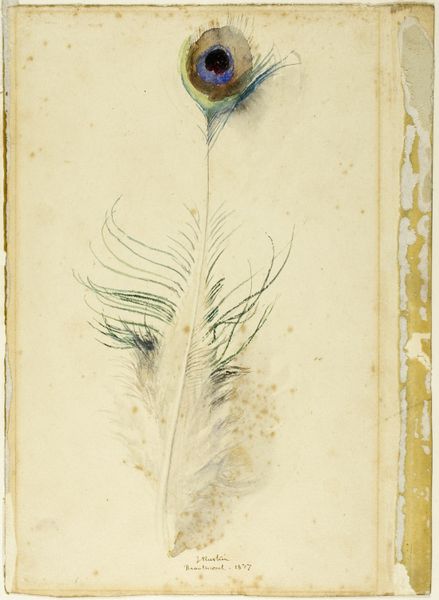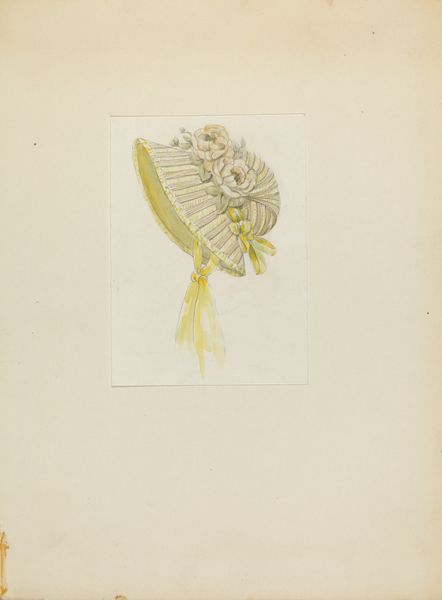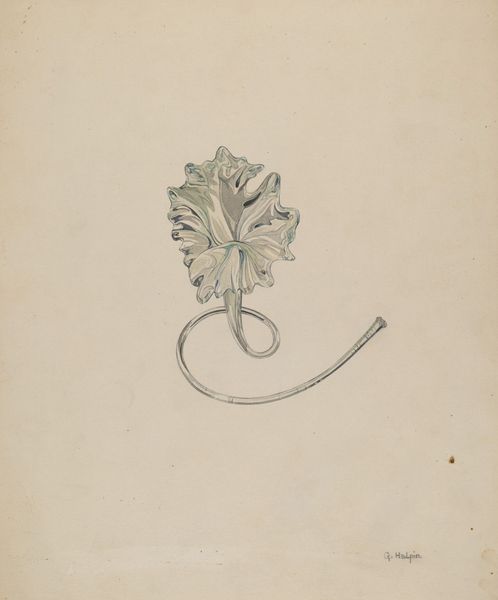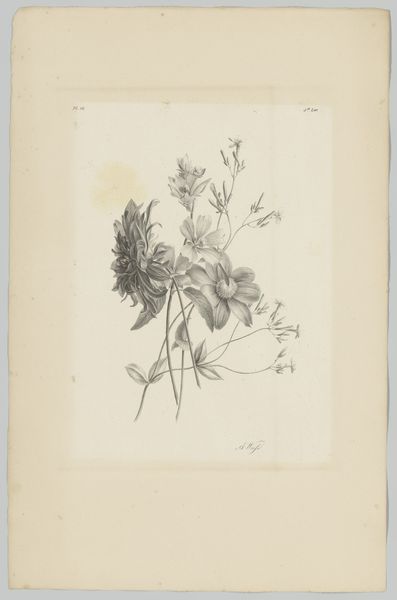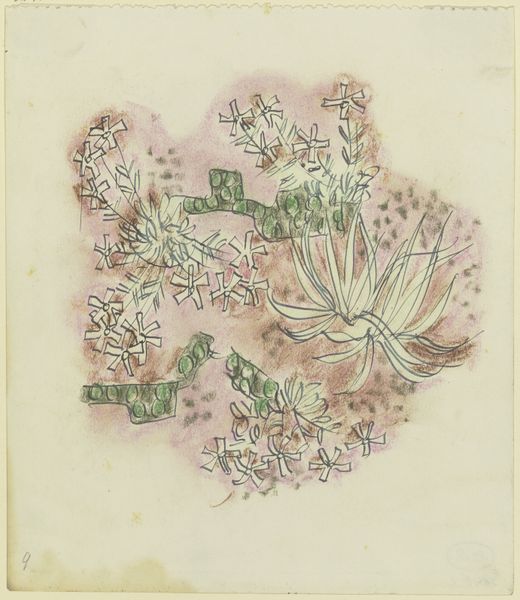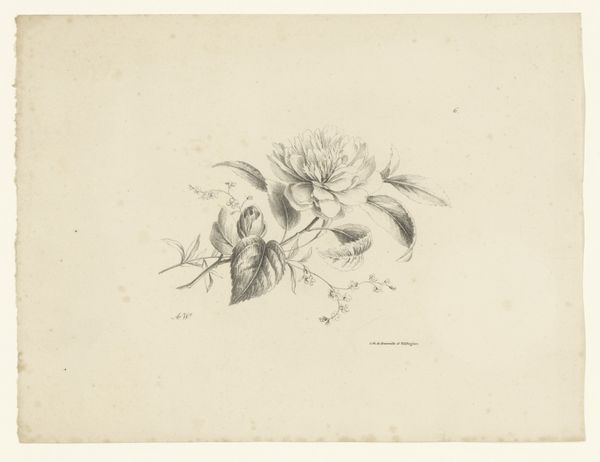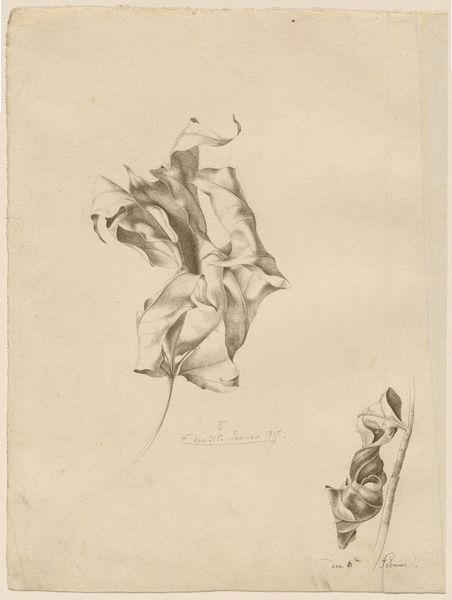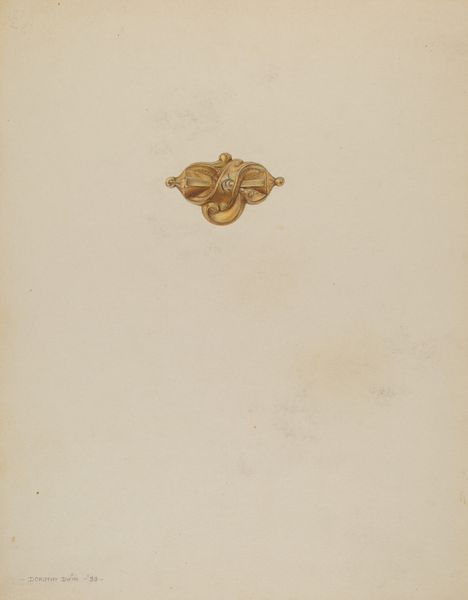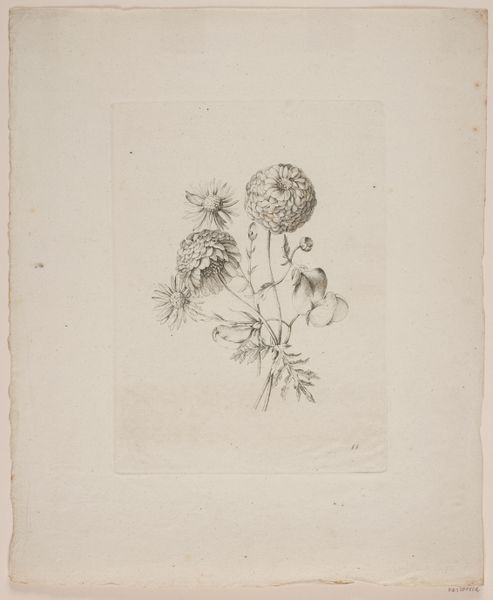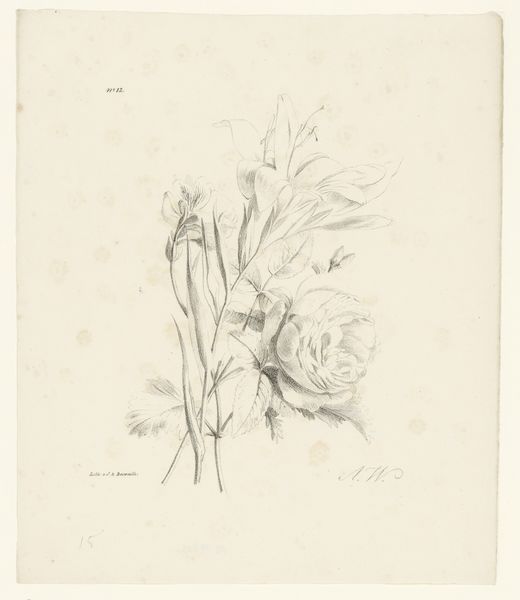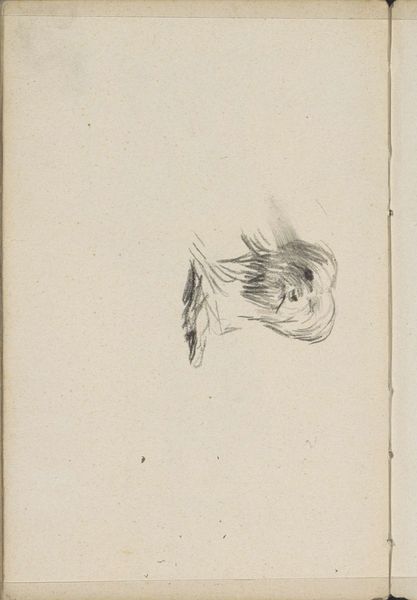
drawing, watercolor
#
drawing
#
watercolor
#
realism
Dimensions: overall: 29.9 x 23.1 cm (11 3/4 x 9 1/8 in.)
Copyright: National Gallery of Art: CC0 1.0
Curator: Jessie M. Benge's "Bonnet," created around 1940, presents a delicate study in watercolor and drawing. Editor: It’s immediately striking, isn't it? A simple, almost childlike rendering, but possessing a certain melancholy. It feels like a memory, fragile and fading. Curator: Observe how Benge meticulously details the form of the bonnet, the folds of the fabric, and the intricate lace trim. It adheres to principles of realism in its dedication to observable form. The color palette of soft yellows and gentle browns provides a unified composition. Editor: Indeed, the colors evoke a particular period, the '40s. Bonnets are so laden with symbolic baggage – representing modesty, domesticity, and female roles. But there’s also a protective quality; it’s a symbol of nurturing and shielding, linked intimately with motherhood. Curator: You’re highlighting its semiotic load. But formally, the translucence achieved with watercolor allows light to penetrate the image, giving it an airy, almost ephemeral quality, no? Editor: Precisely. The artist harnesses a visual language where an ordinary bonnet can become charged with so much more. It reminds one of the iconic photograph of the migrant mother by Dorothea Lange; there’s the same haunting quality of careworn femininity. Even the dots along the brim might imply an ironic pattern. Curator: Perhaps a structural comparison would show a balance, but let's not stretch too far. Benge seems primarily focused on surface observation, documenting the textile and its construction with a patient eye. Editor: Maybe... but visual objects are powerful cultural containers, don't you think? This piece feels deeply embedded with those associations. Curator: I concede it is suggestive. Still, appreciating how the artwork presents color and texture, along with a focused study on the bonnet’s composition, unlocks a deeper appreciation of Benge's work. Editor: I agree completely. Its deceptively simple rendering carries so many resonances from that period of cultural transition. What begins as an unassuming visual artifact quickly becomes an evocative carrier of identity and time.
Comments
No comments
Be the first to comment and join the conversation on the ultimate creative platform.
